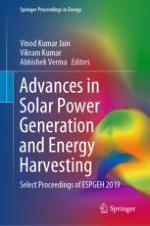This book contains selected and peer-reviewed papers presented at the International Conference on Efficient Solar Power Generation and Energy Harvesting (ESPGEH 2019). The primary focus of the book is on latest advances and scientific developments in the field of solar energy. The book covers various topics such as solar photovoltaics, solar energy harvesting, smart materials for energy applications, hybrid renewable energy plant, and on-grid and off-grid power plant. The book also discusses current techniques to produce energy-efficient solar cells, emerging materials and processes to develop cost-effective solar cells, and different issues in energy management. Given the scope of the contents, this book will be of interest for researchers, professionals as well as policy makers.
